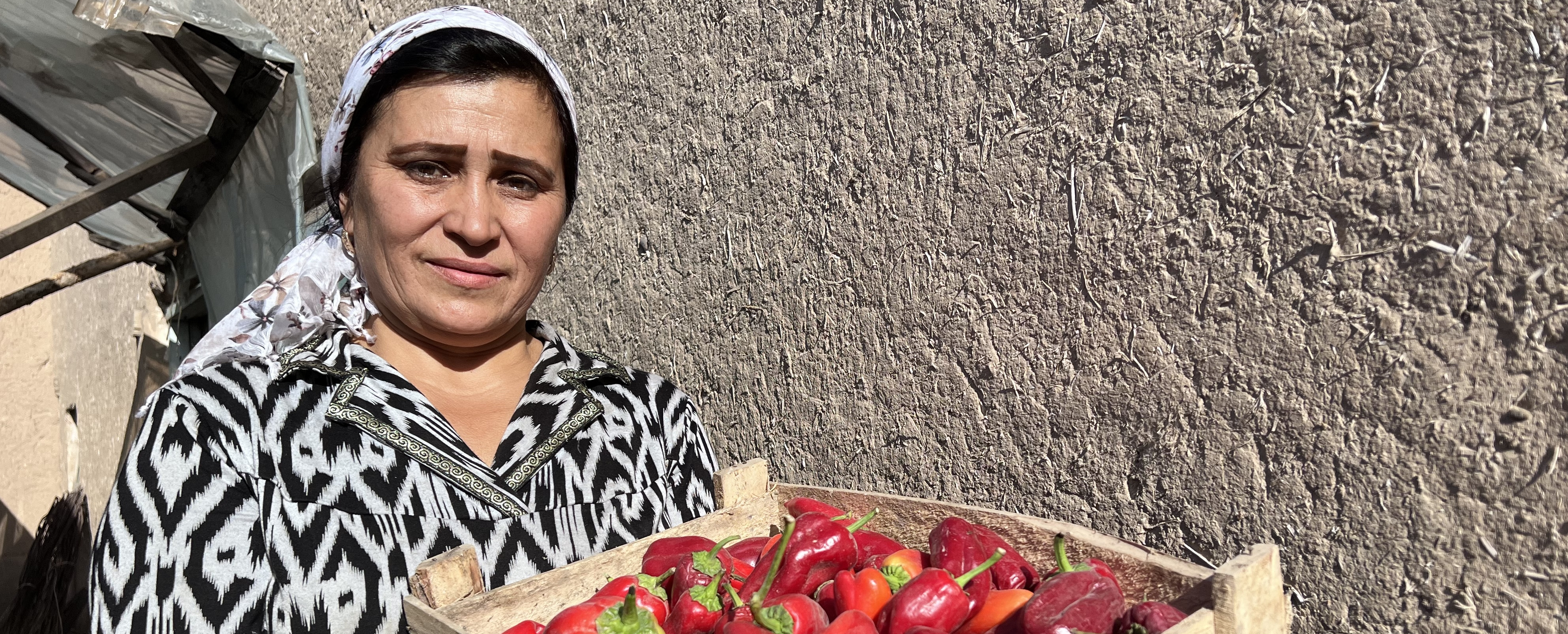
Photo:
Uzbekistan is situated in the heart of Central Asia, bordering Kazakhstan, Turkmenistan, Afghanistan, Tajikistan and Kyrgyzstan. The main part of Uzbekistan's territory falls on the desert plains and the country’s landscape is mostly flat-to-rolling sandy desert with dunes.
The agriculture sector is vital to Uzbekistan's economy, constituting 24.1 percent of the country’s GDP. Irrigated farming forms the base of agricultural production. Consequently, Uzbekistan uses approximately 90 percent of surface water for irrigation. Lack of water resources and land degradation are currently threatening the productivity of this sector. Increasing air temperatures associated with global warming pose a significant threat to this sector, reducing the available water for irrigation. As up to 80 percent of the food required for the country's population is produced by the agrarian sector, reductions in productivity could threaten the food security of the country.
- National
- National Governments
- Private Sector Partners
- Government of Uzbekistan
- Food and Agriculture Organization of the United Nations (FAO)
- United Nations Development Programme (UNDP)
The Government of Uzbekistan began working on its National Adaptation Plan (NAP) process in 2016 and stated its intent to strengthen the country’s resilience to climate change in its Nationally Determined Contribution (NDC).
Submitted in 2017, Uzbekistan’s NDC outlines the country’s planning process to strengthen adaptation and mitigation actions.
The NDC considers three main areas of priority when advancing the country’s climate plans: identify barriers to integration of climate change adaptation into development planning and budgeting, and subsequently build capacity of key stakeholders to effectively plan for and monitor adaptation in Uzbekistan; consolidate existing climate information and put in place a system for science-based, economic analysis of adaptation options, to enable informed decision making in climate change adaptation in the country; and identify options to sustainably finance the NAP process in Uzbekistan and engage the private sector in supporting adaptation.
In February 2017, Uzbekistan submitted its Third National Communication to the UNFCCC and, in September 2018, ratified the Paris Agreement, bringing its Nationally Determined Contributions into effect. Uzbekistan’s NDC stated the government’s mitigation commitment to decrease emissions of specific greenhouse gases per unit of GDP by 10 percent by 2030, from 2010 levels. It also committed to continuing its efforts on building adaptation capacity to reduce the risks of climate change and the adverse impacts it has on various sectors of the economy, social sector, and the Priaralie (Aral Sea coastal zone). It outlined five priority areas to focus adaptation efforts and interventions up until 2030, with agriculture and water management listed as the first priority.
Uzbekistan is also engaged in UNDP’s Climate Promise, an offer to support at least 100 countries to enhance their NDCs by COP26 – and is currently revising its NDC through this initiative. Based on the Strategy for Transition to Green Economy up to 2030 adopted in October 2019, Uzbekistan intends to revisit the current NDC to explore the potential for raising the ambition of both its mitigation, as well as its adaptation goals in its enhanced NDC. The NAP project is complementing this work together with UNDP's support and GCF Readiness Window support.
In 2019, Uzbekistan adopted The Strategy for Transition to Green Economy up to 2030, which aims to significantly increase the efficiency of water resources use in all sectors of the economy through the use of drip irrigation at up to 1 million hectares to increase the yield of crops by 20-40 percent and to halt land degradation, increasing of average productivity of the key agricultural food products by 20-25 percent.
However, despite some investments to date, there remain significant adaptation deficits, especially for agricultural livelihoods and food security.
The Government of Uzbekistan has requested support from the SCALA Private Sector Engagement (PSE) Facility to assist in designing the Green Climate Fund proposal ‘Enhancing climate resilient of agricultural livelihoods of vulnerable populations around the Aral Sea’ project that seeks to address some of these challenges faced by the Aral Sea region.
The proposed initiative aims to strengthen livelihoods through sustainable agricultural practices and sustainable afforestation. It is supported by diverse/innovative finance schemes to reduce negative pressure on ecosystems and increase adaptative capacity to withstand the climate change challenges in Aral Sea region countries. The project aligns strongly with priorities including promoting the efficient use of agricultural land, crop diversity, and rotation, transition to drought and saline-resistant agriculture crops, and decreasing fossil fuel footprint in the sector.
The agreed-upon support will strategically contribute towards attaining national objectives by providing supporting studies on measures to develop climate-resilient agricultural commodity value chains for farmers in the Aral Sea region. It also aims to explore financing mechanisms that can crowd in resilient private investments into these value chains, with a view towards increased market linkages and commercialization.
Scope of work
Research, consultations, and analyses can inform interventions to help the project meet its objectives around private sector engagement and crowding-in finance for climate adaptation in the agriculture section in the Aral Sea region.
Activities include:
Value Chain Selection, Mapping & Analysis
Validation workshop
Desk review
Economic viability analysis
Consultations with financing partners

